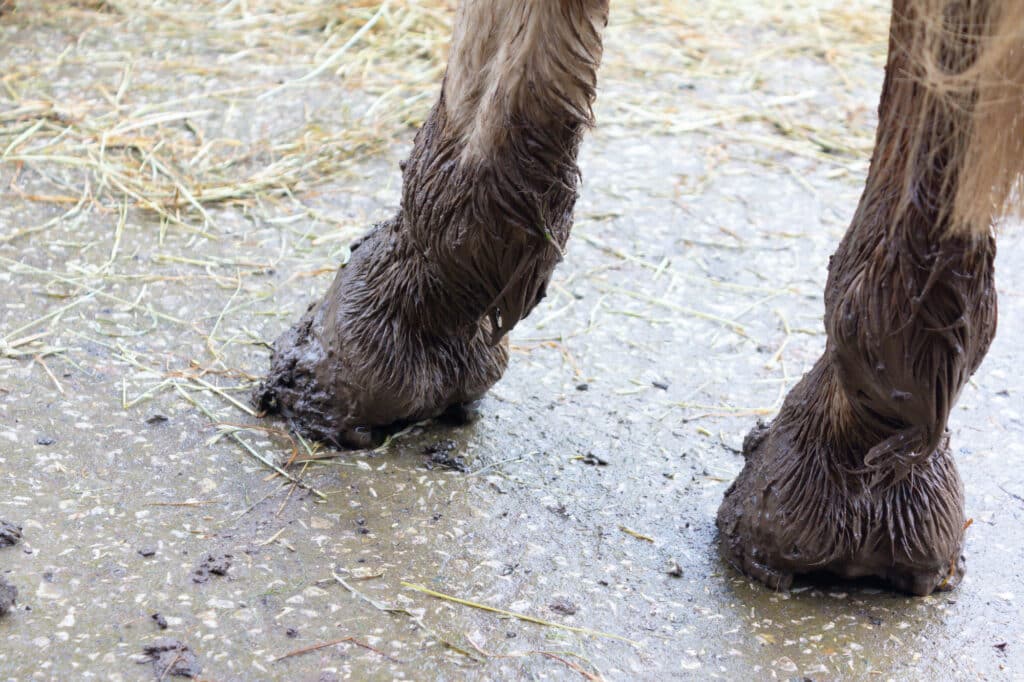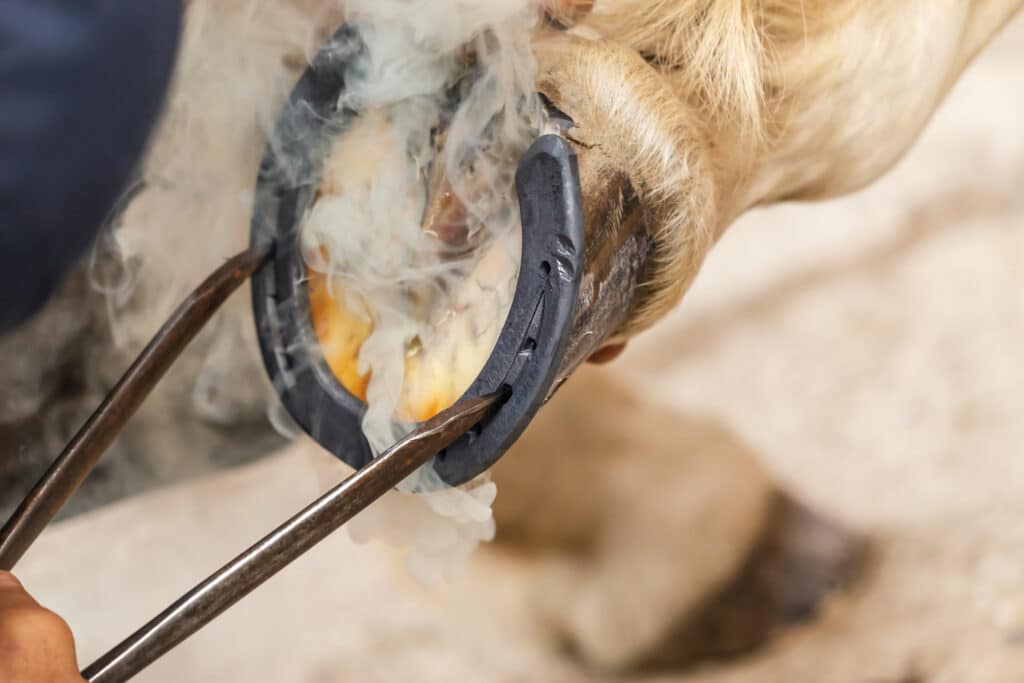Steve Butler, discusses the problems which occur when shoeing wet feet
So it’s that time of year again, winter is fast approaching, nights are drawing in and, fields are getting wetter, which can have quite an adverse effect on your horse’s feet. As we all know feet absorb and lose moisture based on environmental conditions, while we apply lotions and potions in an attempt to limit damage caused by over dry and over wet feet. During this time of year we face extra challenges with equine feet due to excess moisture absorption.
The hoof structures become softer, (think about how soft your own nails are after a bath). This softening of the hoof structures can result in many issues thrush, seedy toe, hoof wall cracks, damage to the coronary band and bulbs of heels – depending on how long the hoof is submerged in damp or wet fields.
When nailing on shoes, the nails do not hold well when the walls are softer, which in turn results in shoes being lost more frequently. The hooves do not retain as strong a shape or integrity.

What can owners do to help their horses and farriers in the winter?
There is an easy answer – ensure your horse is stabled or in a dry area at least an hour before shoeing.
Wet feet are challenging to shoe for a few reasons, they swell with moisture but, when they dry out in a nice clean shavings bed over night, they will shrink. While shrinkage is minimal, the shoeing nails that were applied when the feet were wet are now in a slightly smaller foot, they cannot shrink with the feet.
The reverse can happen when horses have very dry feet that suddenly become wet; the clenches raise as the feet swell. When the feet then dry out again this can result in clenches becoming sharp and the shoes loose.
These changes in the hoof are small but, they really can have a profound effect on nail/shoe retention.
The Liedenfrost effect
The Leidenfrost effect, occurs when a liquid comes into contact with a solid that is at a temperature well above that liquid’s boiling point. Upon contact, a layer of vapour forms between the liquid/solid interface, creating a barrier between the two.
When shoeing horses, the Leidenfrost effect occurs when the farrier applies a hot shoe to a wet hoof; bubbles of air are created that insulate the hoof from the shoe for a period of time – this will result in an uneven burn, because areas of the hoof will burn at differing rates depending on their saturation levels.
The Liedenfrost effect creates steam under pressure that escapes from between the shoe and the hoof which in turn, can not only burn your farrier but also burn the coronary bands of your horse. Also the hoof wall is placed under intense pressures at a microscopic level, which can create cracks in the hoof.
What other issues occur when the hooves are saturated?
Softer hooves tend to have more issues with gravel. Farriers often see this when the white line opens up – again due to increased moisture content, where small stones or pieces of gravel are pushed easily in to the white line resulting in abscess.
The hoof wall is made of 3 different types of horn; the inter, intra and tubular horn. I describe this state to owners by suggesting:
“Imagine a box of drinking straws, now fill the box of straws with glue”
“The straws are the tubular horn, the glue inside the straws is intra tubular horn, and the glue between the straws is the inter tubular horn”
When a horse’s feet are over saturated with water, the horn between the tubuals (intra tubular horn) softens; this starts to break down the 3 main structures of the wall. We often see this in horses that have broken off pieces of hoof during the winter… the hoof wall has “little bristles” – that is the tubular horn without its glue.
The resulting weakness within the hoof wall structure itself will have an effect on the surrounding tissues, such as the collateral cartilages, ligaments and tendons.

Sole depth is effected by the moisture content
This is the case in so much as a softer sole will wear away more quickly – especially that of Thoroughbreds with low shallow soles. Increasing its shallowness as the surrounding wall is unable to support the structures due to increased flexibility in the wall and, the downwards forces applied through mechanical momentum and weight.
Wet feet and mud are a nightmare for farriers’ tools; rasps, knives and hoof snips dull quickly in the wet and mud. Rasps are one of your farriers biggest tool expenses over a year, being replaced once a week at just under £30 each so, rusting them out within a couple of days with mud and rain, will eventually increase the cost of the shoeing as we farriers try to recover our losses and extra expenses.
What can we as owners do to help our farriers and therefore our horses feet?
- Moisture regulation is key. I have always advised my clients to use a water based hoof moisturiser in summer and a hoof oil in the winter. It’s all about creating an average water saturation within the hoof, reducing the extreme differences will help to reduce the issues caused.
- Ensure your horse’s feet are dry and clean for farriers. Dry clean feet help to reduce the Liedenfrost effect; reduce steam; reduce the expansion and contraction of feet away from nails and shoes. A flatter more level burn and fit is also achieved with dry feet.
- Having a dry clean flat area for shoeing will always improve your farrier’s ability to do a good job.
- Ensuring your horse is dry also reduces its own annoyance, there aren’t many horses that don’t get fidgety with water dripping down their legs.
- A little known fact is farriers are more prone to sacking clients in winter than summer… due to mud and water. It’s the straw that breaks the camel’s back. We cannot shoe your horse well if confronted with mud, sludge and puddles.
- We are always trying to achieve our best job.
